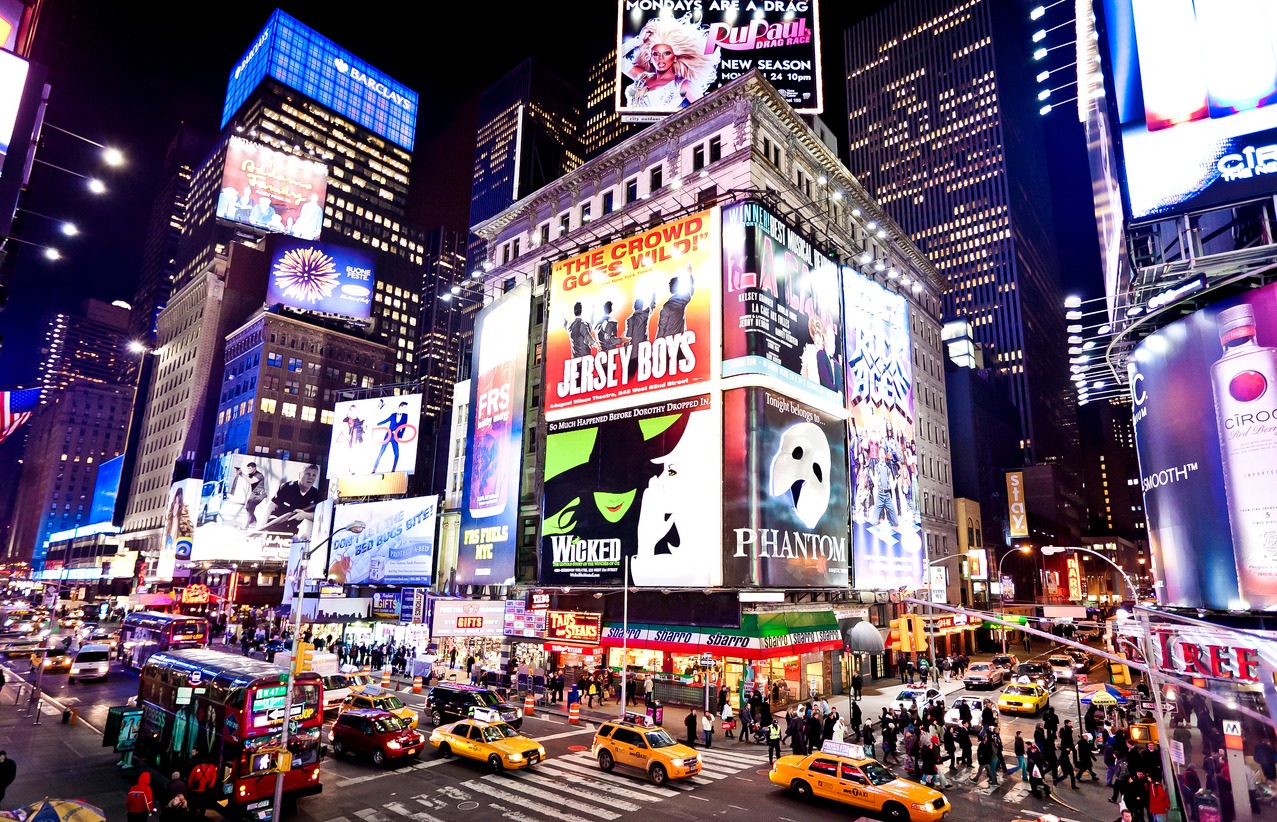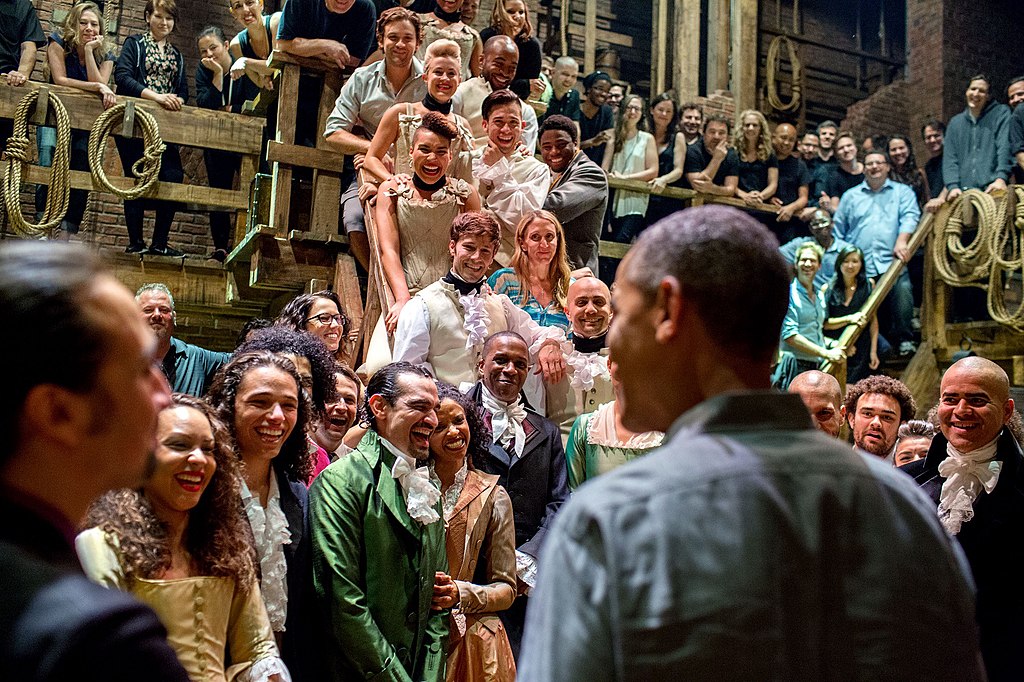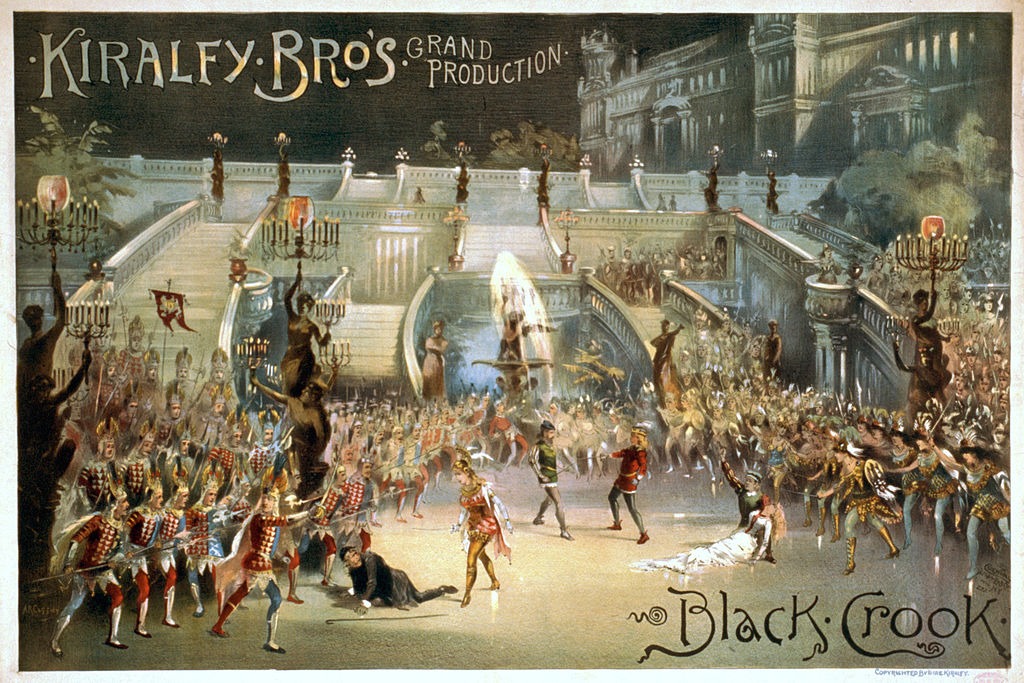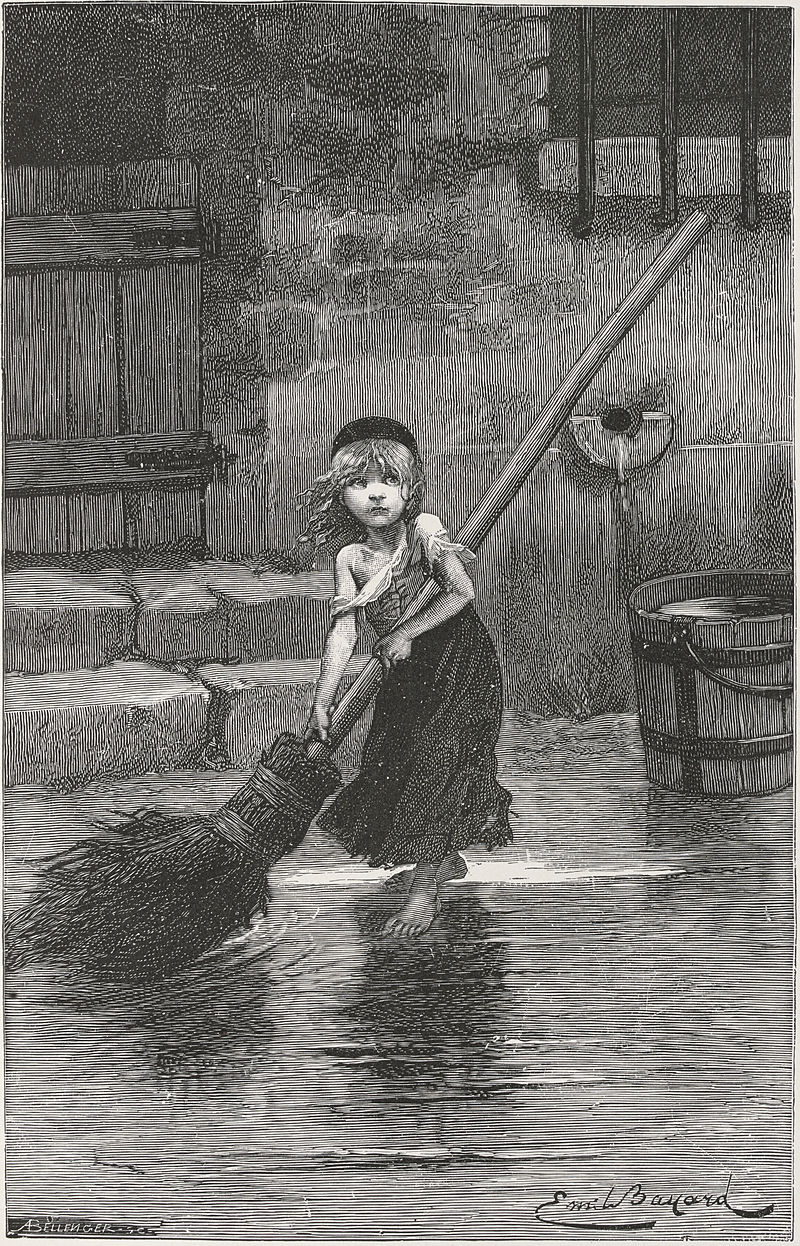The lights of Broadway have long been a beacon, drawing artists, dreamers, and audiences from around the world to the heart of Manhattan. The evolution of Broadway and New York theater is a testament to the city’s enduring status as a cultural epicenter. This journey through time reveals not only the transformation of performance art but also reflects broader societal shifts.
A Journey Through Time
The history of Broadway and New York theater is a rich tapestry that mirrors the changing cultural, social, and political landscape of America. This evolution can be divided into distinct eras, each marked by its own innovations, challenges, and iconic productions.
The Early Years: Late 19th to Early 20th Century
The genesis of New York’s theater district began in the late 19th century as theaters started clustering around the Times Square area, giving rise to what would become known as Broadway. This era saw the rise of vaudeville and the musical revue, precursors to the modern musical. Shows were a mix of comedy, dance, and music, and they catered to a wide audience. Notable figures of this time include Florenz Ziegfeld, famous for his Ziegfeld Follies, and composers like Irving Berlin, who started his career in Tin Pan Alley, contributing to the musical landscape of the time.
The Golden Age of Broadway: 1940s to 1960s
The mid-20th century is often referred to as the Golden Age of Broadway, marked by a surge of creativity and innovation. This era birthed some of the most beloved and critically acclaimed productions in Broadway history. Rodgers and Hammerstein emerged as a powerhouse duo, transforming the musical theater genre with integrated shows like “Oklahoma!” (1943), where songs and dances were woven into the narrative to advance the plot and develop characters. This period also saw the premieres of “West Side Story” (1957), with its groundbreaking choreography by Jerome Robbins, and “My Fair Lady” (1956), which set new standards for musical theater.
The Rise of Off-Broadway: 1950s and 1960s
Parallel to the mainstream success of Broadway, the Off-Broadway movement gained momentum, offering more experimental and avant-garde productions. Off-Broadway theaters, often smaller and more intimate, provided a platform for works that challenged traditional narratives and forms. This era saw groundbreaking works like “The Threepenny Opera” (1954) and “Hair” (1967), the latter of which brought rock music and contemporary issues to the musical stage, reflecting the counter-cultural movements of the time.
The British Invasion and Mega-Musicals: 1980s
The 1980s witnessed a significant shift with the arrival of the British mega-musicals. Andrew Lloyd Webber’s “Cats” (1982) and “The Phantom of the Opera” (1988) epitomized this trend, featuring spectacular staging, elaborate sets, and memorable scores. These productions appealed to international audiences and set records for longevity, firmly establishing the commercial viability of large-scale musical theater.
The Disney Era and Corporate Influence: 1990s to Early 2000s
The 1990s saw the entry of major corporations into Broadway production, most notably Disney, which transformed the landscape with family-friendly, high-budget productions like “The Lion King” (1997). This era, often dubbed the “Disneyfication” of Broadway, showcased the potential for theatrical productions to become global entertainment phenomena, combining artistic creativity with substantial commercial appeal.
The Modern Era: 2000s to Present
The contemporary era of Broadway and New York theater is characterized by a diverse range of productions, from revivals of classic plays and musicals to innovative new works that push the boundaries of the medium. “Hamilton” (2015), with its fusion of hip-hop music and diverse casting, represents a significant milestone, reflecting contemporary America’s complex historical narrative and cultural diversity. The digital age has also brought changes to how productions are marketed and how audiences engage with theater, making it more accessible to a broader audience.
Challenges and Resilience
Broadway and New York theater have faced numerous challenges, including economic downturns, societal changes, and most recently, the global COVID-19 pandemic. Each time, the theater community has shown remarkable resilience, adapting to new realities and finding innovative ways to keep the spirit of live theater alive.
The history of Broadway and New York theater is a story of continual evolution, reflecting the dynamic nature of American culture and society. Each era builds upon the last, contributing to a rich legacy that continues to captivate and inspire audiences around the world.
Diversity and Inclusion
The transformation of Broadway and New York theater towards greater diversity and inclusion represents a significant shift in the performing arts landscape, mirroring broader societal changes and acknowledging the rich tapestry of cultures and identities that make up the audience and the nation. This evolution in storytelling and casting is not just about bringing new faces to the stage but also about reimagining the stories we tell and the perspectives from which they are told.
- Broadening the Spectrum of Stories – Broadway and off-Broadway productions are increasingly exploring narratives that encompass a wide range of cultures, identities, and experiences. Plays and musicals are delving into themes of race, gender, sexuality, and disability with greater depth and nuance than ever before.
- Inclusive Casting and Representation – Casting choices on Broadway are becoming more intentionally inclusive, breaking away from traditional typecasting to reflect a more diverse and authentic representation of characters. This approach not only provides opportunities for a broader range of actors but also enriches the storytelling by bringing different perspectives and experiences to the stage.
- Revivals with a Contemporary Twist – Classic plays and musicals are being reimagined in ways that resonate with contemporary audiences, often through diverse casting or by reinterpreting characters and themes.
- Creating Spaces for New Voices – The theater community in New York is increasingly recognizing the importance of not just inclusive casting but also elevating playwrights, directors, and creatives from underrepresented backgrounds. Initiatives and platforms are being established to nurture and showcase the talents of minority artists, ensuring that the diversity on stage is matched by diversity behind the scenes.
- Audience Engagement and Accessibility – Efforts towards diversity and inclusion also encompass making theater more accessible to a wider audience. This includes not only physical accessibility but also initiatives aimed at making performances more financially accessible and culturally inviting to diverse audiences.
The push towards diversity and inclusion in Broadway and New York theater is a testament to the industry’s commitment to reflecting and engaging with the world around it. By embracing a broader spectrum of human experience, theater becomes a more vibrant, dynamic, and inclusive art form that not only entertains but also challenges, educates, and inspires. In addition to learning about the evolution of NYC’s theater scene, discover about the rise of its global media. Visit New York City – The Rise of a Global Media Capital. Learn about the influence of New York on the comic culture. Visit The Influence of New York City on Comic Book Culture
Technological Innovations on Stage
The stage of Broadway has long been a canvas for storytelling, but the palette with which directors and designers paint has grown exponentially with the advent of cutting-edge technologies. Theatrical productions are no longer just about actors and scripts; they’re about creating an environment that can transport audiences to another world, another time, or even into the mind of a character. Let’s dive deeper into how technological innovations are reshaping the Broadway experience.
Advanced Lighting and Sound Systems
Lighting and sound are foundational elements of theater that have seen revolutionary advancements. Programmable LED lights and moving fixtures offer a spectrum of colors and dynamics that can mimic the natural light of different times of day or create fantastical environments. Sound design, too, has become more sophisticated, with surround sound systems that can pinpoint audio to specific areas of the theater, enveloping the audience in the world of the play. These technologies allow for nuanced storytelling, where the mood and atmosphere can shift in an instant, heightening the emotional impact of a scene.
Digital Projections and Set Design
Digital projections have opened up new vistas for set design, transforming static backgrounds into living, moving landscapes. These can be as simple as changing backdrops or as complex as interactive elements that respond to the actors’ movements. In productions like “The Curious Incident of the Dog in the Night-Time,” projections create a dynamic, ever-changing environment that reflects the protagonist’s inner turmoil and perception of the world. This integration of digital and physical elements creates a seamless visual experience that can bring the impossible to life on stage.
Augmented Reality (AR) and Virtual Reality (VR)
While still in its nascent stages in Broadway productions, AR and VR are poised to redefine the immersive experience of theater. AR, for instance, can overlay digital imagery onto the real world, allowing audiences to see additional content through special glasses or devices. This could be used to provide visual effects visible only to certain parts of the audience, or to enhance the storytelling with digital elements that interact with live actors.
Social Media Integration and Real-time Engagement
Shows like “Dear Evan Hansen” integrate the concept of social media into their narrative and design, reflecting its impact on modern society. Screens and feeds are woven into the fabric of the set, and the storyline explores the consequences of our digital interactions. This not only makes the theater experience more relatable but also invites audiences to reflect on the pervasive nature of technology in their lives.
Famous Plays in The Broadway And New York Theater
Broadway and New York Theater have been home to many iconic and groundbreaking plays over the years. Here’s a list of some of the most famous and influential plays that have graced the stages of Broadway:
- “Death of a Salesman” by Arthur Miller – This classic American drama tells the story of Willy Loman, a struggling salesman, and his quest for success and happiness, delving into themes of the American Dream and family dynamics.
- “A Streetcar Named Desire” by Tennessee Williams – This powerful play introduces us to Blanche DuBois, a woman whose life has been filled with tragedy and hardship, and her clash with her brutish brother-in-law, Stanley Kowalski.
- “The Crucible” by Arthur Miller – Set during the Salem witch trials, this play is a riveting exploration of hysteria, reputation, and the power of fear, serving as an allegory for McCarthyism in America during the 1950s.
- “Angels in America” by Tony Kushner – A two-part epic that explores the AIDS crisis, politics, and spirituality in America during the 1980s, known for its powerful commentary on homosexuality and society.
- “Hamilton” by Lin-Manuel Miranda – A revolutionary musical that blends hip-hop, jazz, R&B, and Broadway, telling the story of American Founding Father Alexander Hamilton, noted for its diverse cast and innovative storytelling.
- “The Phantom of the Opera” by Andrew Lloyd Webber – The longest-running show in Broadway history, this musical tells the haunting story of a masked figure who lurks beneath the Paris Opera House, and his obsession with a young soprano, Christine.
- “Rent” by Jonathan Larson – A rock musical based on Puccini’s “La Bohème,” set in the East Village of New York City, dealing with themes of love, loss, and the struggle with HIV/AIDS.
- “Les Misérables” by Claude-Michel Schönberg and Alain Boublil – An epic musical based on Victor Hugo’s novel, focusing on the struggles of ex-convict Jean Valjean and his experiences during the French Revolution.
- “Chicago” by John Kander and Fred Ebb – A satirical musical exploring the themes of celebrity, scandal, and corruption in Jazz Age Chicago, centered around the stories of two murderesses who become media sensations.
- “West Side Story” by Leonard Bernstein and Stephen Sondheim – A musical that updates Shakespeare’s “Romeo and Juliet” to the gang-ridden streets of 1950s New York, focusing on the forbidden love between Tony and Maria amidst gang conflicts.
- “Who’s Afraid of Virginia Woolf?” by Edward Albee – A searing drama that delves into the complexities of marriage, reality, and illusion through the volatile relationship of George and Martha, an older couple who invite a younger couple to their home for an evening that exposes bitter disappointments and truths.
- “Fences” by August Wilson – Part of Wilson’s Pittsburgh Cycle, this powerful drama focuses on Troy Maxson, a former baseball player who struggles with race relations in the United States and the dynamics within his own family.
These plays and musicals represent just a fraction of the rich tapestry of works that have made Broadway and New York Theater the epicenter of theatrical innovation and excellence. Each has left an indelible mark on the cultural landscape, influencing countless artists and audiences worldwide.
The Impact of Broadway and New York Theater
Broadway and New York City theater have long been at the epicenter of the performing arts world, not only shaping cultural narratives but also significantly impacting the city’s economy and the global theater scene. The influence of Broadway and NYC theater extends far beyond the footlights, affecting communities, economies, and creative industries worldwide.
Cultural Influence
Broadway and NYC theater have been instrumental in pushing the boundaries of storytelling, exploring complex themes, and presenting diverse perspectives. Iconic productions originating on Broadway often set trends that resonate throughout the theater world, influencing the types of stories told and the ways they are presented. These productions also serve as a mirror to society, reflecting and sometimes challenging societal norms and values, thereby fostering a deeper understanding and dialogue around important issues.
Economic Impact
The economic contribution of Broadway and NYC theater cannot be overstated. Pre-pandemic, Broadway alone contributed billions to New York City’s economy annually, supporting thousands of jobs, from performers and backstage crew to hospitality and tourism-related positions. The theater district attracts millions of visitors each year, contributing significantly to the city’s tourism industry. Beyond ticket sales, the ripple effects include spending on restaurants, hotels, and transportation, underscoring the theater’s role as a key economic driver.
Innovation and Education
Broadway and NYC theater are hubs of innovation, where new technologies in staging, lighting, and sound design are often first introduced. This spirit of innovation extends to educational programs and workshops that nurture new talent and introduce young people to the arts. Theater education programs affiliated with Broadway and off-Broadway productions play a crucial role in developing the next generation of artists and audiences, ensuring the continued vitality of the performing arts.
Global Reach
The influence of Broadway and NYC theater extends well beyond the United States, with many productions touring globally or being adapted for international audiences. Iconic shows like “The Phantom of the Opera,” “Les Misérables,” and “Cats” have enjoyed immense success worldwide, bringing the magic of Broadway to theaters across the globe. Moreover, live broadcasts and digital streaming have made Broadway more accessible, allowing people everywhere to experience the best of New York City theater.
Community and Identity
Broadway and NYC theater contribute to a sense of community and identity, both for New Yorkers and the global community of theater enthusiasts. For many, attending theater is not just about entertainment but also about participating in a shared cultural experience that fosters a sense of belonging and connection. Through its diverse stories and characters, theater promotes empathy and understanding, bridging cultural and social divides.
New York Theater and Broadway Scene Now
The current Broadway and NYC theater scene is a vibrant mix of new adaptations, classic revivals, and innovative original works. Highlights include musical versions of “The Notebook” and “Water for Elephants,” a revival of Ibsen’s “An Enemy of the People” featuring Jeremy Strong, and “My Son’s A Queer (But What Can You Do?)” exploring themes of queerness and family acceptance. “The Who’s Tommy” and “The Outsiders” offer a musical take on classic stories, while “Lempicka” and “Suffs” bring historical figures and movements to the stage. Alicia Keys’ “Hell’s Kitchen,” “The Wiz” starring Wayne Brady, and “The Great Gatsby” musical add to the diverse offerings, alongside “Cabaret” and “Patriots,” which delve into historical and political themes. Off-Broadway, the scene is equally dynamic, promising unique theatrical experiences beyond the mainstream.
The Future – Digital Platforms and Virtual Theaters
The future of Broadway and New York theater is increasingly intertwined with digital innovation, broadening the horizons of performance beyond traditional stages. The advent of virtual reality (VR) and live streaming is transforming the theater experience, making it accessible to a global audience and offering immersive new ways to enjoy performances. These digital platforms not only overcome geographical limitations but also offer unique, interactive experiences, allowing viewers from around the world to engage with productions in real-time. As technology advances, we can expect these digital formats to become even more integrated into the theater ecosystem, complementing live performances and ensuring the art form’s resilience and continued relevance in a rapidly changing world.
Conclusion
Broadway and New York theater are in the midst of a thrilling transformation, fueled by technology, societal changes, and a relentless drive for innovation. As we look to the future, one thing is clear: the essence of theater, with its power to tell stories, evoke emotions, and bring people together, remains unchanged. In this new age, Broadway isn’t just evolving; it’s reimagining the very fabric of theatrical experience, promising a future as bright and captivating as its illustrious past.




